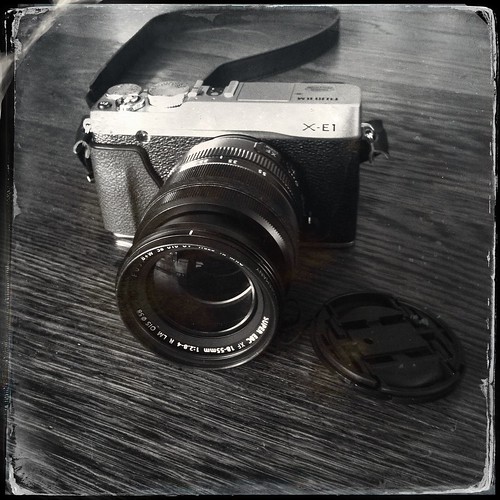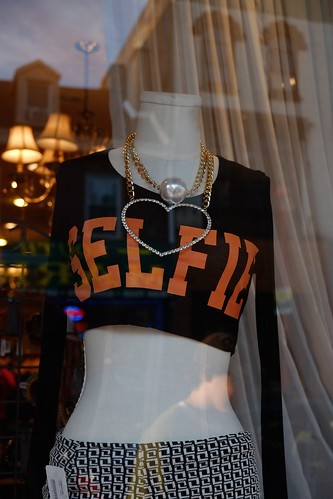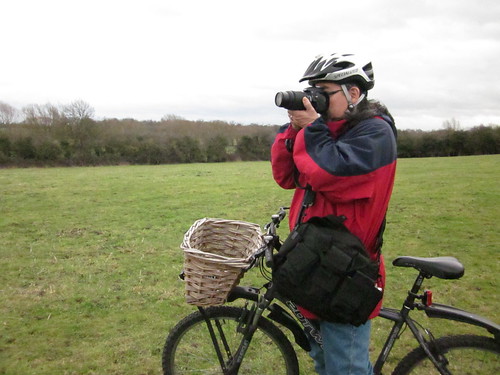Tuesday’s Bored and Brilliant challenge is an interesting one for me, because I agree with it, with some strong reservations. Here it is:
Your instructions: See the world through your eyes, not your screen. Take absolutely no pictures today. Not of your lunch, not of your children, not of your cubicle mate, not of the beautiful sunset. No picture messages. No cat pics.
Now, as someone who loves taking pictures, and who has written a lot about digital photography, I think that mindless photography is a bad thing.
But I think all mindless activities are bad. I even wrote a book about why they’re bad, and what to do about them.
However, mindful photograpy is a great thing, and I think that what we should be focused on in this challenge is avoiding mindless picture-taking— taking pictures of our sandwiches out of habit— and more on mindful photography.
There’s a long history of criticizing the practice of continuous documentation. Sherry Turkle had a piece in the New York Times in 2013, for example, about how constant photography “interrupts experience to mark the moment,” and “makes us accustomed to putting ourselves and those around us “on pause” in order to document our lives.”
Of course, other people have found this kind of attitude off-putting, as this classic XKCD comic explains:

But as Australian philosopher Damon Young put it in an essay in 2013, the problem isn’t so much with the quality of the picture, but rather with how “ubiquitous photography can be a distraction from a more fraught, awkward or intense response to life:”
So the problem is not necessarily the imagery – it’s the avoidance it enables. And the technology does not force us to do this. It is a human, all-too-human urge for ease: instead of confronting life, we turn away to a kitsch scene with a schmick filter….
The point is not to shun technology – this idea is simply more distraction, in a romantic key. The point is to reflect on how it’s used: to savour the run, or to just keep running away.
Certainly many of the photographs we take are not Cartier-Bresson level achievements, and many aren’t meant to permanently document events or people (indeed, you rather hope that that revealing selfie actually vanishes into the Snapchat nether void).
But I think Young is onto something, because in my experience it’s absolutely the case that you can use photography— even iPhone photography, or somewhat gimmicky programs like Hipstamatic— to see the world more deeply.
When I was in England, and taking a lot of pictures, I became very aware (as I explained at the time at great length) of how having a camera made me look at my surroundings more intensely, pay attention to materials and colors and shadow, and appreciate even the wintry beauty of the landscape.
Having the camera didn’t just allow me to record what was a life-changing trip; it made me more engaged during it.
So photography can take us out of world. Or it can encourage us to pay closer attention to it.
But the camera itself doesn’t change the way we see the world; learning to use the camera, the practice of seeing the world through it, is what changes us. That’s an important distinction, because it places the agency, the ability to change, back with us.
So the aim should be to think a bit more about whether a picture— or taking a picture under some circumstances— is an act that interrupts what you’re doing, or flows with it; whether it redirects your attention away from the subject, or encourages you to look at it more deeply. If it’s the second, then go for it.
This kind of mindful photography is also really important these days because it’s a really good place to learn a more contemplative attitude to technology, and it illustrates how you can become more mindful about technology, and more mindful while using technology.
Of course, humans are no longer the only species that takes lots of pictures:

this monkey stole an iPhone. you won’t believe what happens next
So maybe we really can all benefit from this challenge, so long as we use it not to renounce technology, but to become more thoughtful about it, and to think about the virtues of using it more mindfully.




